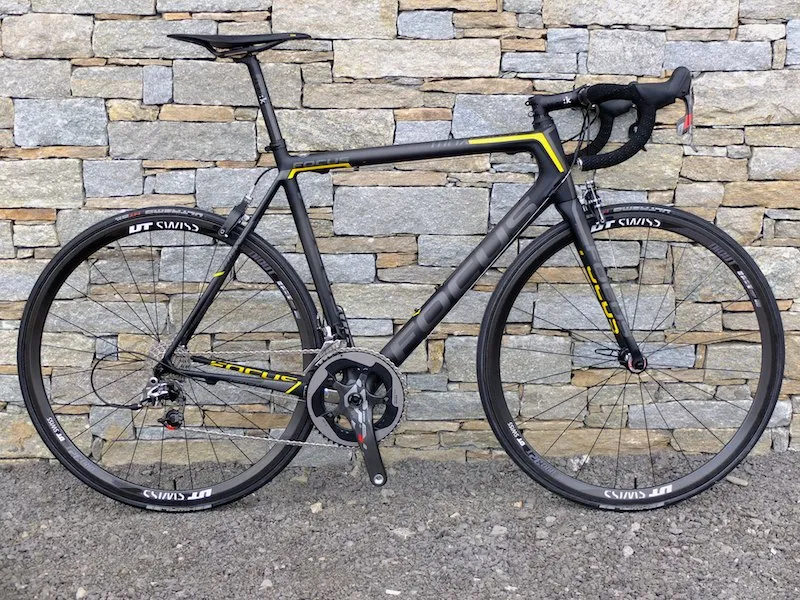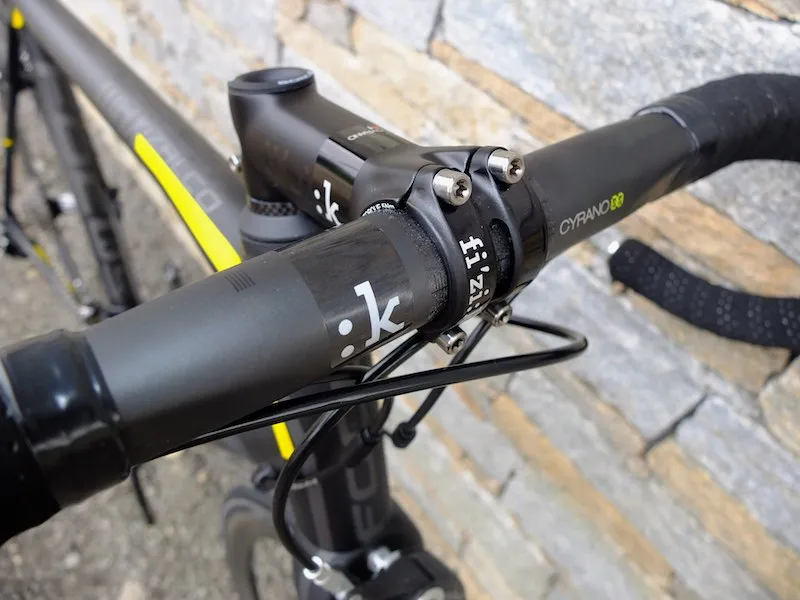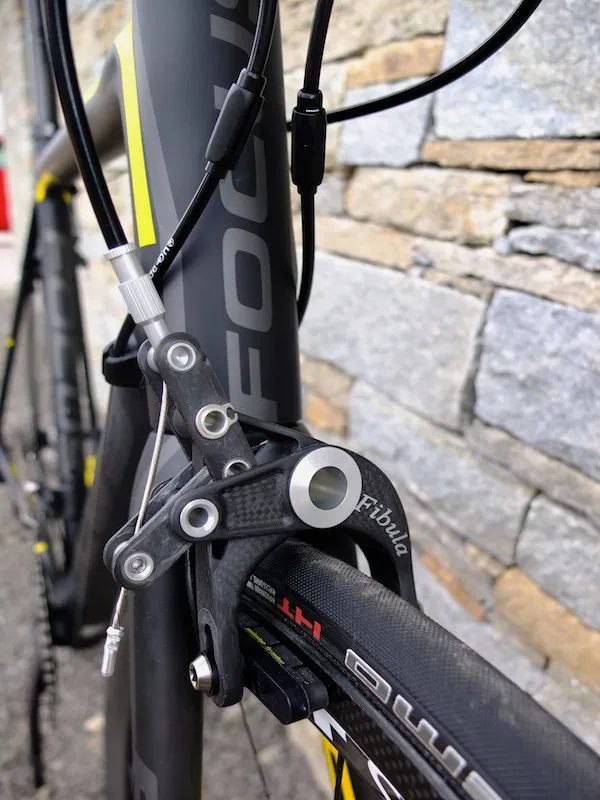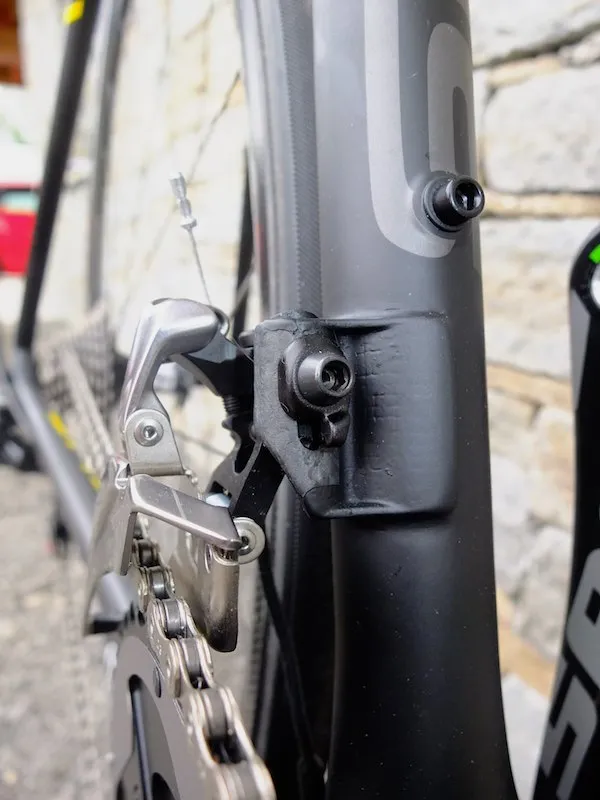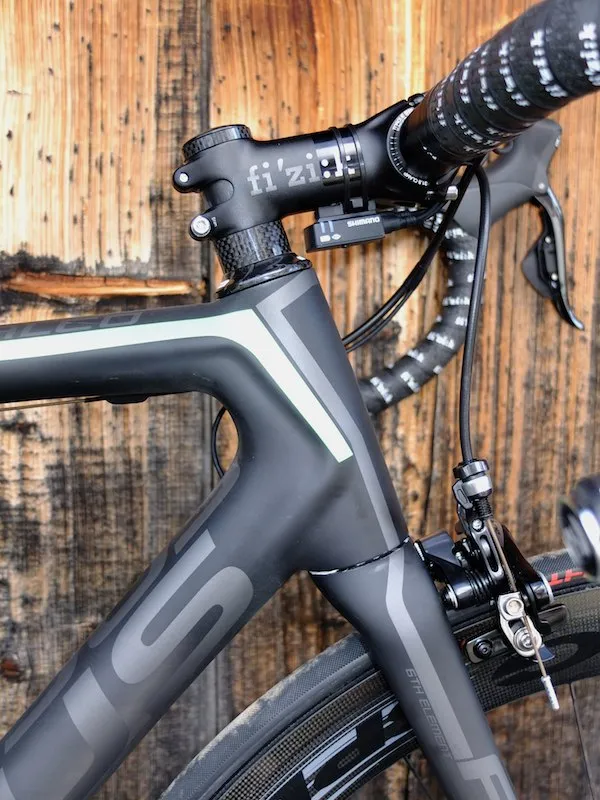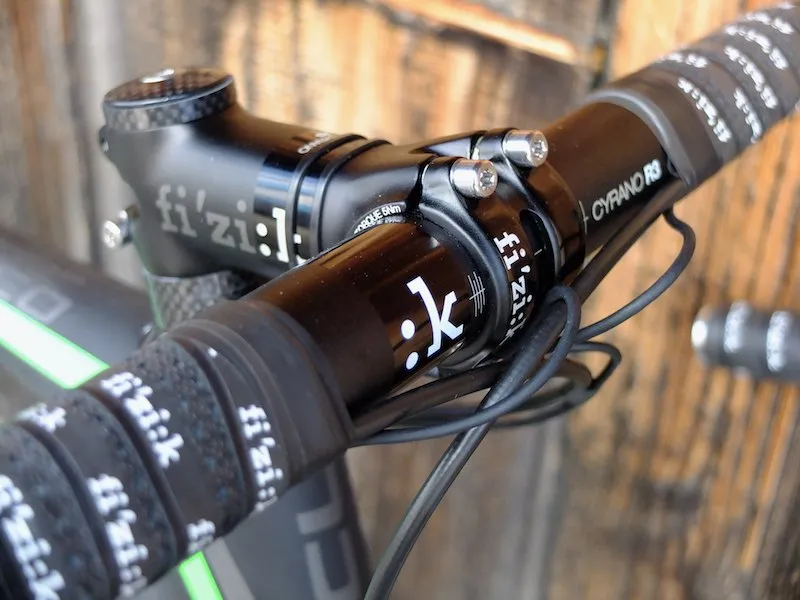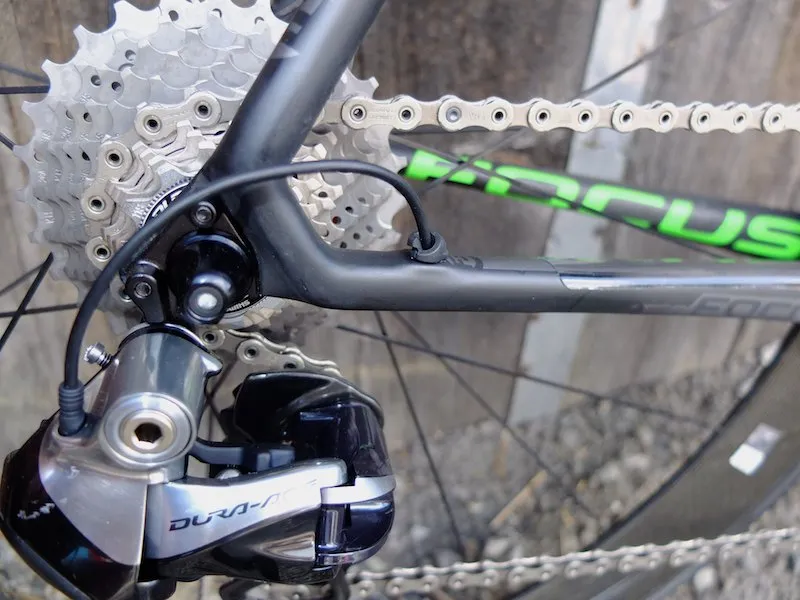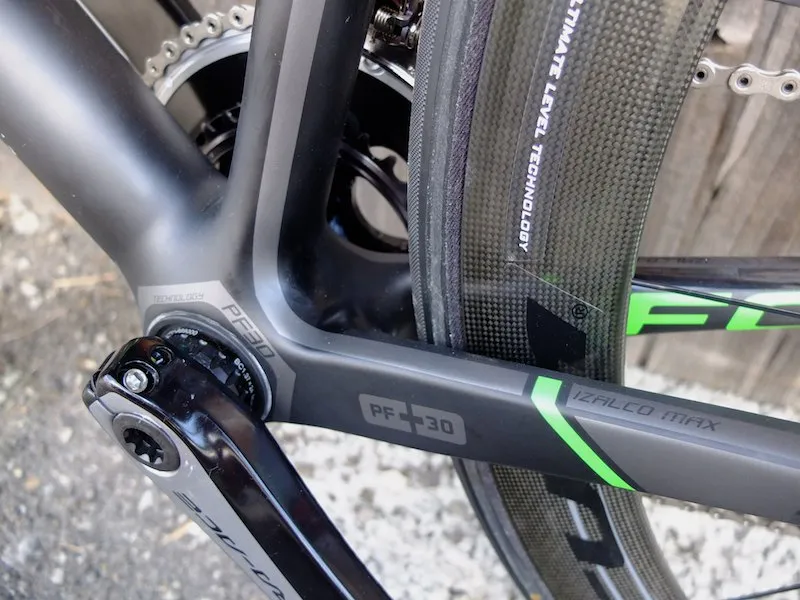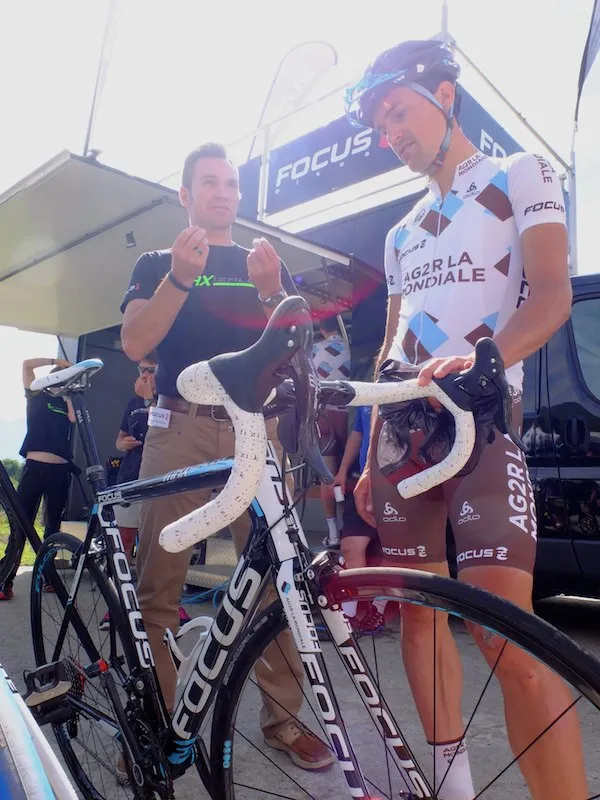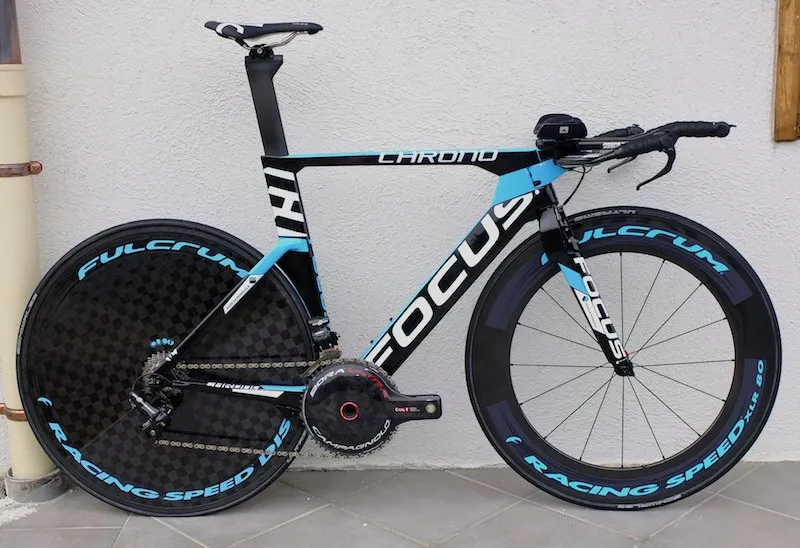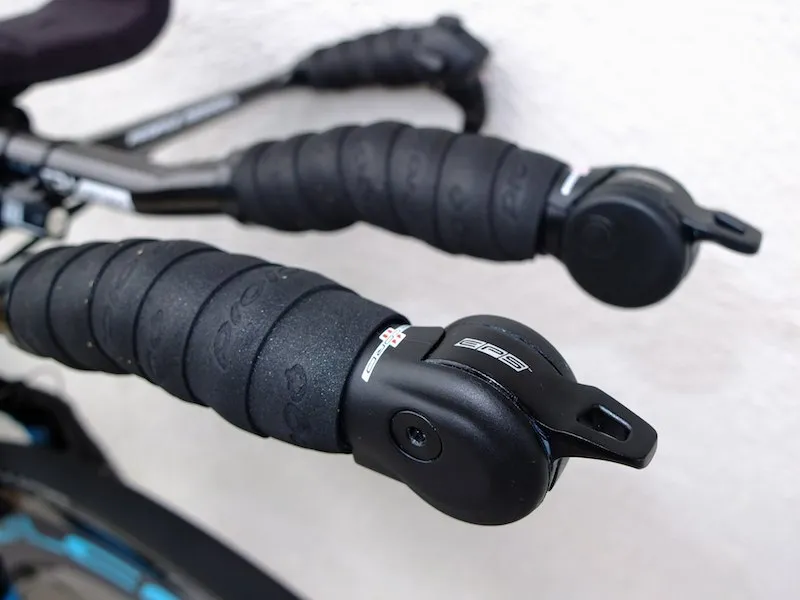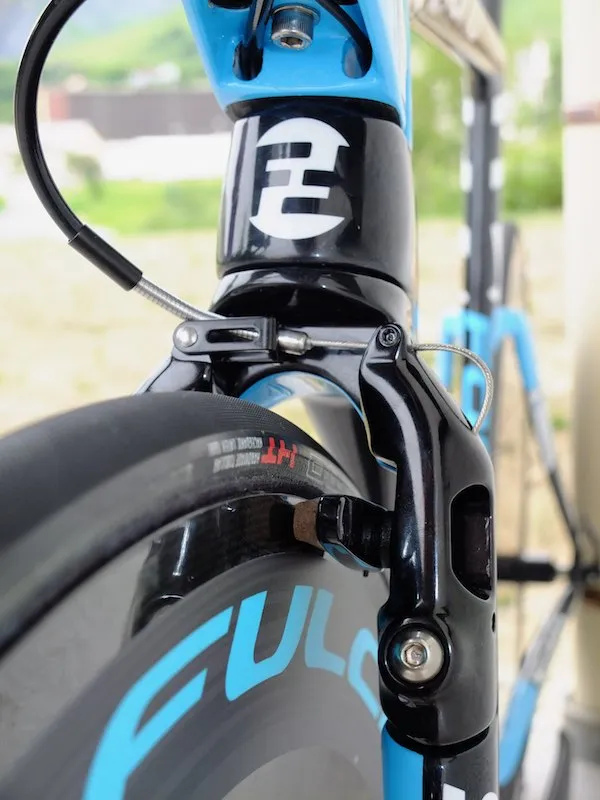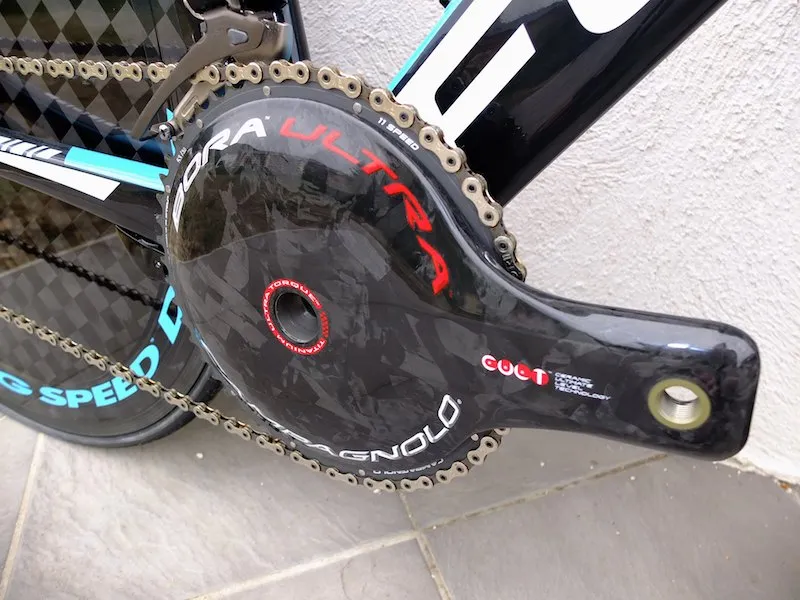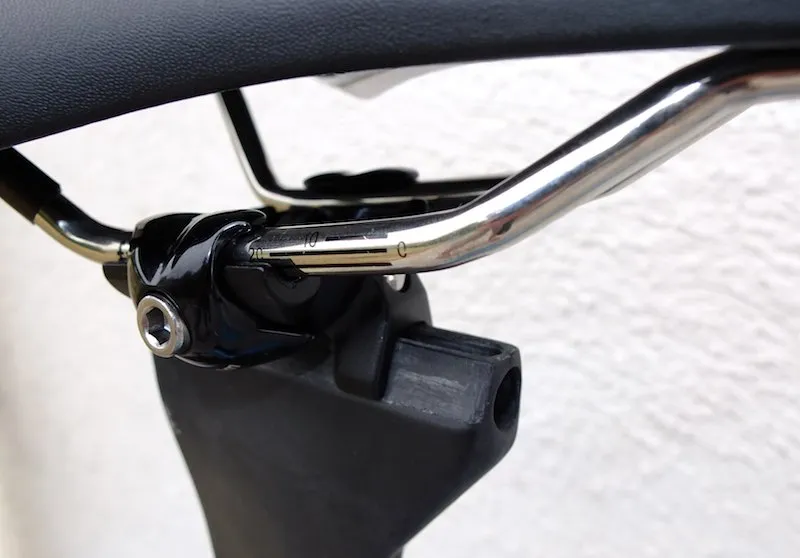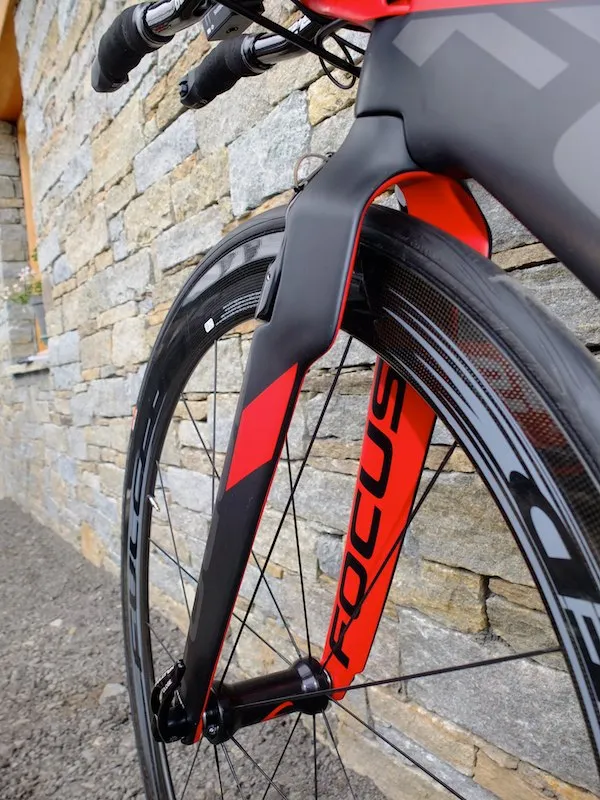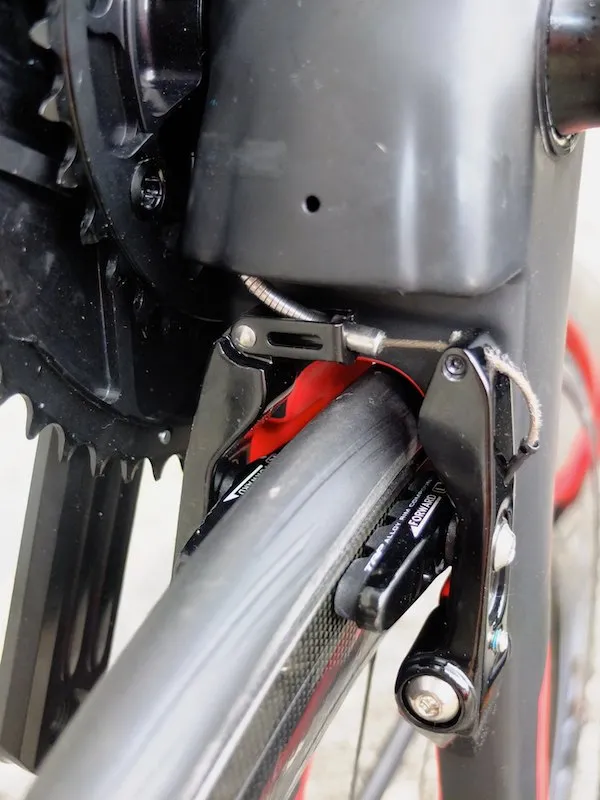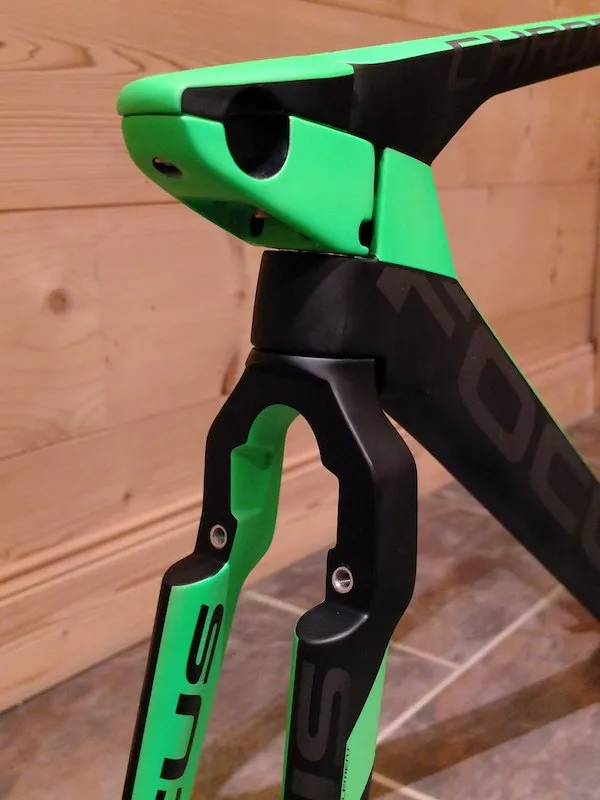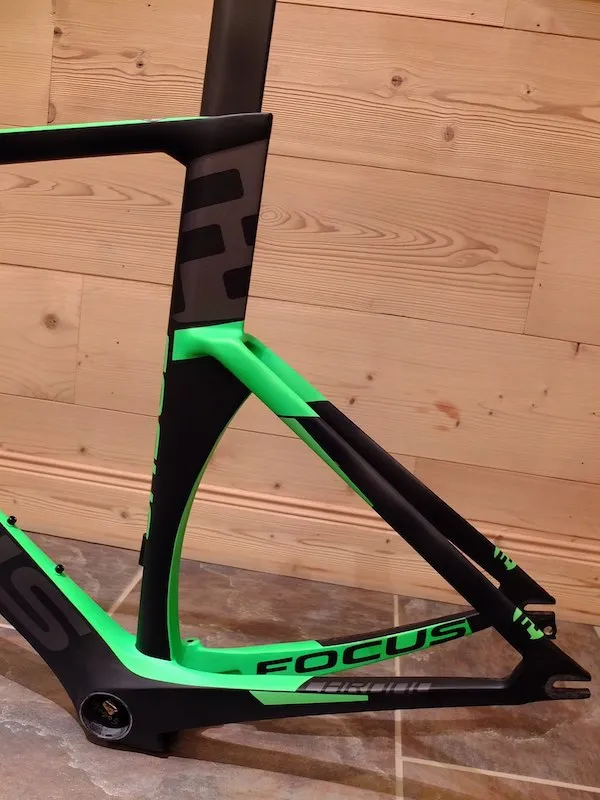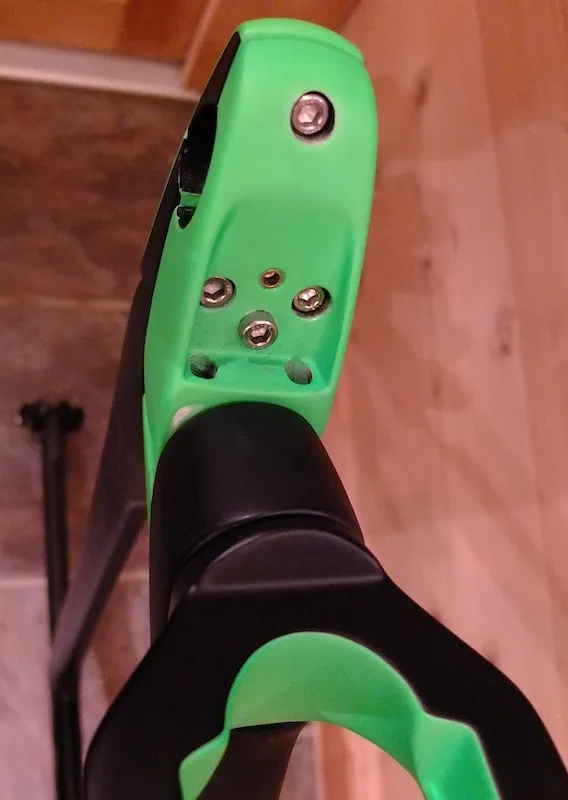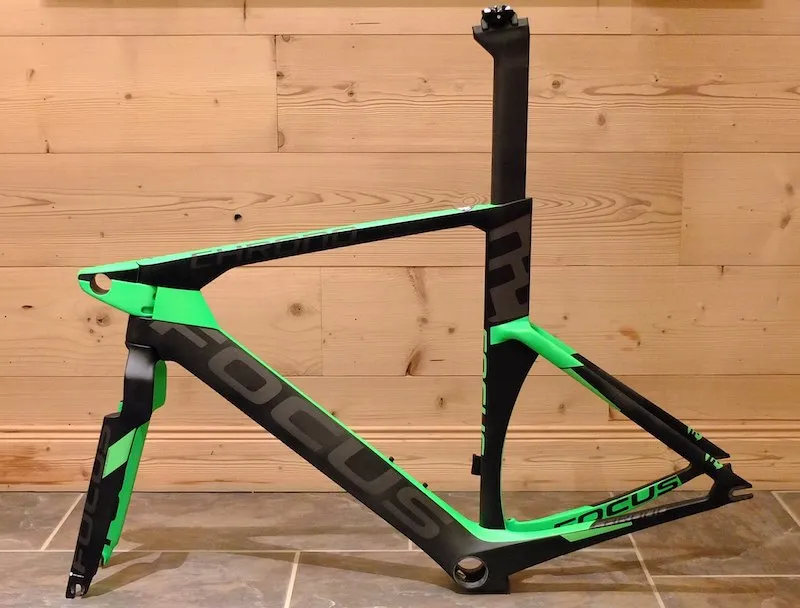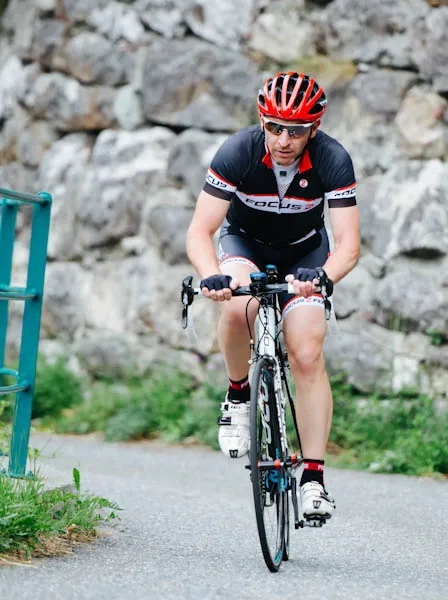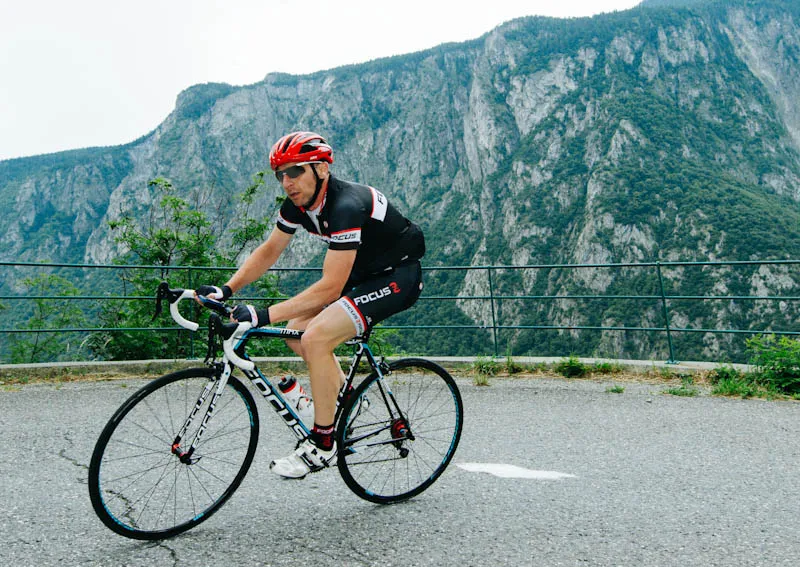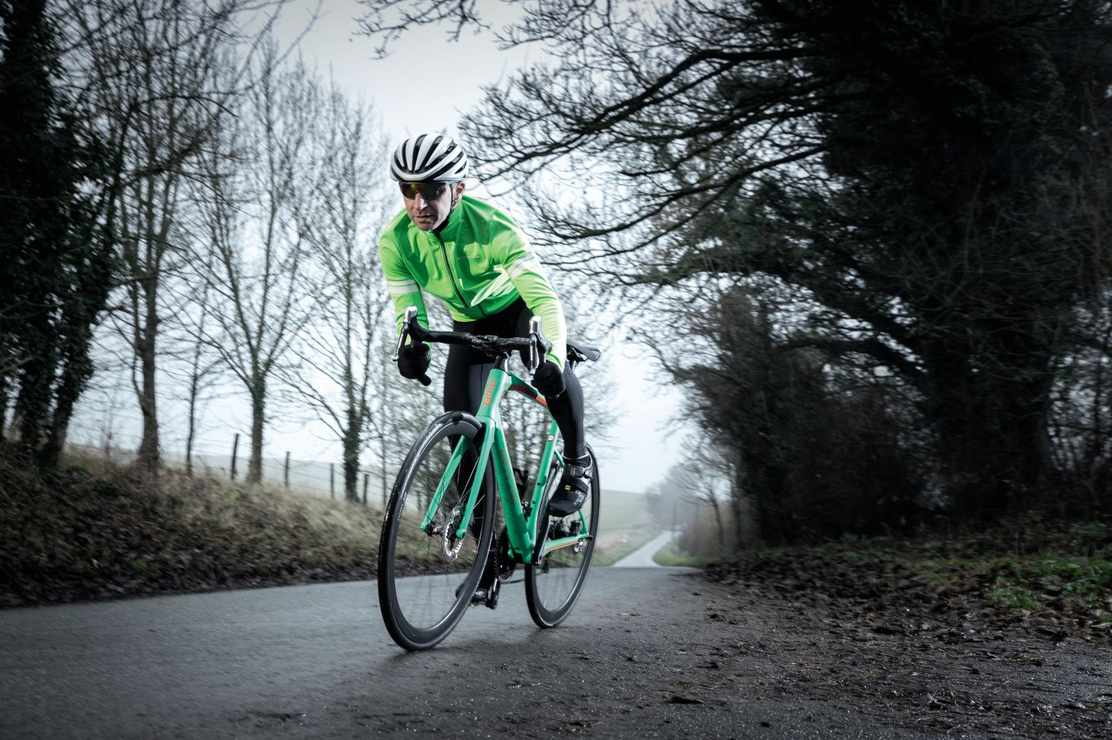Two months after a BikeRadar reader spotted it in Italy, the incredibly light Focus Izalco Max has officially been launched, with Ag2r racing it in stage 10 of the Tour de France. The team will also be racing the new Focus Izalco Chrono in the stage 11 individual time trial.
The top-end Izalco Max 0.0 will have SRAM Red 22 and weigh a claimed 5.48kg (12.08lb), with THM Fibula callipers and DT Swiss carbon tubulars. Average frame weight across all sizes is 760g. The 54cm sample frame we weighed tipped the scales at 720g (with cage bolts).
The Izalco Chrono will come with either a flat time trial stem or a more adjustable triathlon setup.
Focus 2014 road bikes at eurobike 2013
Video: Focus 2014 road bikes at Eurobike 2013
Izalco Max
There are two versions of the new Focus Izalco Max frame, one configured for electronic shifting and the other for mechanical. Cabling is external, with carbon cable stops that are bonded in place – performance, stiffness, weight and ease of maintenance were major aims.
Focus are employing what they term as SSPS (Stable Stiffness Per Size), meaning that each of the seven different frame sizes has a customised tube diameter and stiffness relative to its projected stress level. A 61cm frame will therefore be stiffer relative to a 48cm model, and each size is tested individually.
Tube shapes have smaller cross-sections on average than frames in the existing Izalco range, and thinner wall thicknesses (down to 1mm in places). Focus found that, with a proportion of high and ultra high modulus carbon fibre and thin tube walls, they could make a stronger, stiffer frame by limiting the tube diameters; the opposite of conventional thinking.
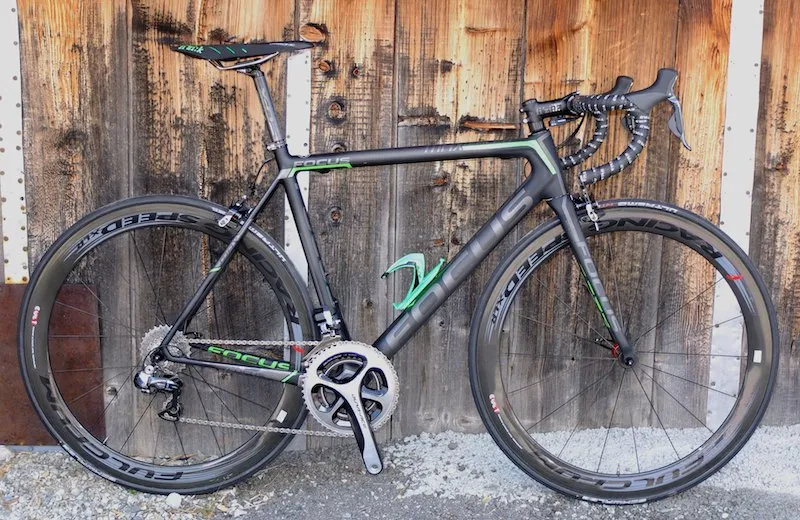
The Shimano Dura-Ace Di2 Focus Izalco Max 1.0 weighs a claimed 6.4kg (14.1lb)
A full-carbon press-fit 30 bottom bracket was chosen, to help maintenance and because the wider shell of some other systems would compromise bearing support when the carbon is only 2mm thick. Q Factor is improved and the only compromise is less width for chainstay attachment, although the chainstays are larger at that junction than before.
The chainstays are considerably shallower than before, but wider for greater lateral rigidity. They're joined to hollow carbon dropouts. The head tube features a vertical external rib, known as a Boost Box, to give a solid front end. The 295g fork is made in one piece using continuous carbon fibre, and even the bearing seats for the 1 1/8in to 1 1/4in headset are carbon.
Key to lightening the carbon frame was optimising the shape of each carbon sheet – generally favouring longer strips over small carbon patches – and minimising the number of overlapping layers. The result is an average claimed frame weight (for the 48cm to 61cm range) of 760g, although we weighed a painted 54cm example including bottle cage bolts at 720g.
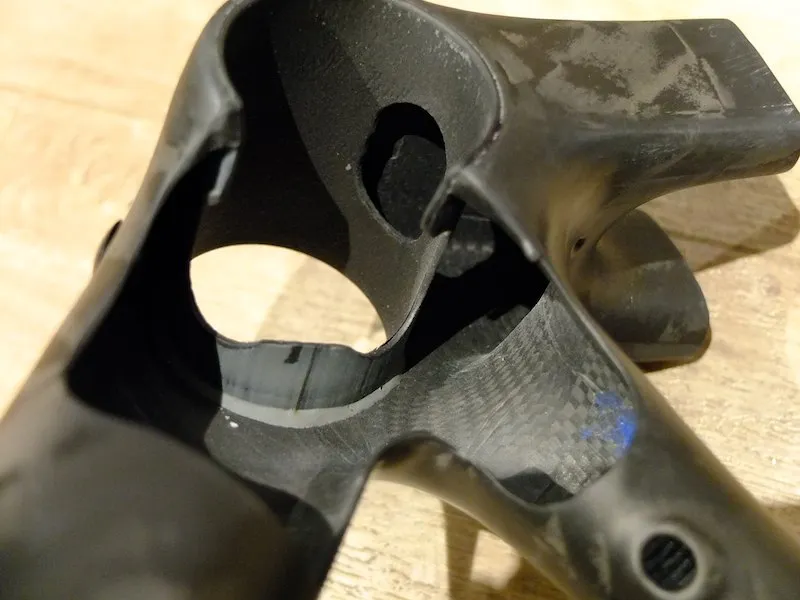
A cutaway of the all-carbon press-fit 30 bottom bracket area
There are seven size options (48, 50, 52, 54, 56, 58 and 61cm) and five models of the Focus Izalco Max, the first of which will be available at the end of August. Pricing, for now, is only in Euros.
At the top of the tree is the Izalco Max 0.0, with SRAM Red 22, THM’s exotic Fibula carbon brake callipers, carbon Fi'zi:k finishing kit, DT Swiss RRC 32 carbon wheels and new Schwalbe One tubular tyres. The example on show at the launch weighed just 5.48kg (12.08lb) and will cost €8,999.
A Max Team Ag2r La Mondiale replica has mechanical Campagnolo Super Record, Fi'zi:k kit and Fulcrum Racing Speed wheels with Schwalbe One tubulars. It weighs only 5.9kg (13lb) for €6,999.
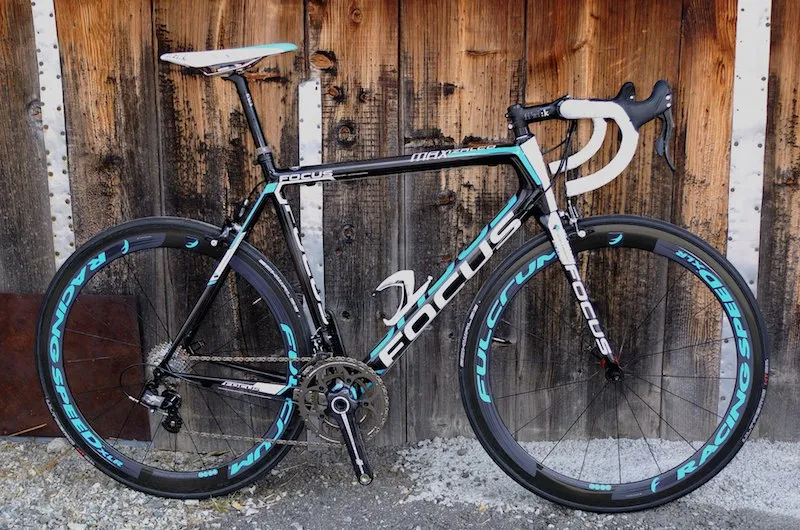
The Team Ag2r La Mondiale replica machine
The Izalco Max 1.0 has Shimano Dura-Ace Di2, Fi'zi:k kit and DT Swiss RC 21 Dicut clinchers at 6.4kg (14.1lb) and €6,599. For the same weight and price, the Max 2.0 has Campagnolo Record EPS, Fi'zi:k kit and Fulcrum Racing Zero clinchers.
The cheapest Izalco Max 3.0 offers SRAM Red, a Fi'zi:k bar, stem and saddle, Focus carbon seatpost and Fulcrum Racing Zero clinchers with Schwalbe One tyres. It will cost €4999 and weigh just 6.2kg (13.67kg).
First impressions
We spent more than three hours on the new Izalco Max in the Alps. While it wasn't an exhaustive test, we found the frame to be remarkably solid at the front when we were charging downhill and braking hard into hairpins. It gave us enormous confidence, never straying from the chosen line due to cornering or brake-induced deflection.
Sprinting out of slow corners felt extremely urgent too, with more than enough rigidity to heave against. The handling was docile and neutral, but sharp as a knife when required, and we were able to climb with great efficiency, in or out of the saddle, with no sense of lateral energy-wasting deflection.
Riding a mechanical-equipped bike, we appreciated the stripped back simplicity of the design, but especially the purity of its performance. On first impressions, the Izalco Max is equal to any of the current crop of pro team bikes, possibly with a slightly firmer feel and, potentially, far less weight.
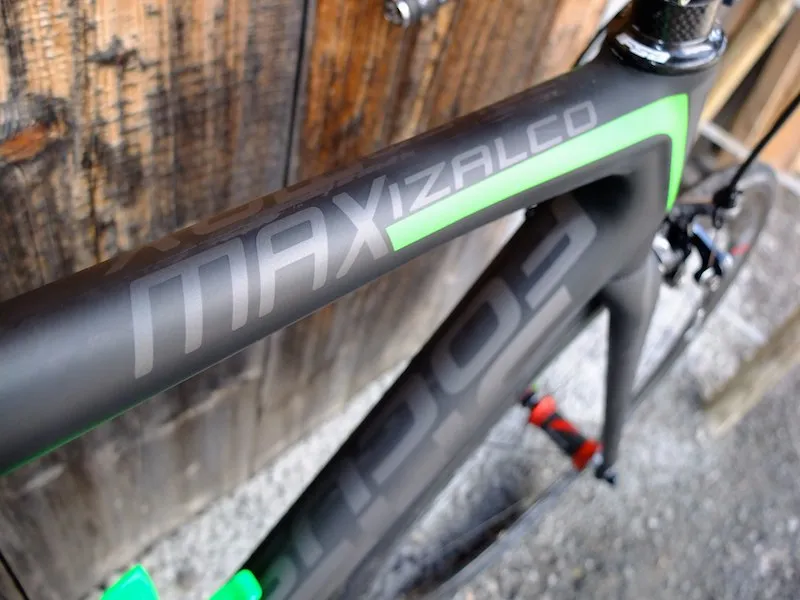
The Focus Izalco Max weighs a claimed average of 760g across all frame sizes
Izalco Chrono
The Chrono Walser has been a range stalwart for years, and aero design specialist Andy Walser consulted on the Izalco Chrono project. The aim was the lowest possible drag and the integration of cabling, brakes, stem and seatpost, but within UCI regulations on time trial bike dimensions.
These rules, along with aerodynamic laws, mean that many current TT bikes look similar. At first glance the Izalco Chrono fits the usual mould, although clever interpretation by Focus engineers has given it some unique features.
Initial sketches were followed by aluminium geometry test samples, then full-carbon prototypes that were wind tunnel tested using both a full-size dummy rider and real cyclists.
The first test version actually proved slower than the Walser model, until Focus discovered that the rider's pedalling action created turbulence within the main triangle, causing drag. Keeping this area as large as possible and narrowing the head tube by only using a 1in to 1 1/8in steerer made a large difference.
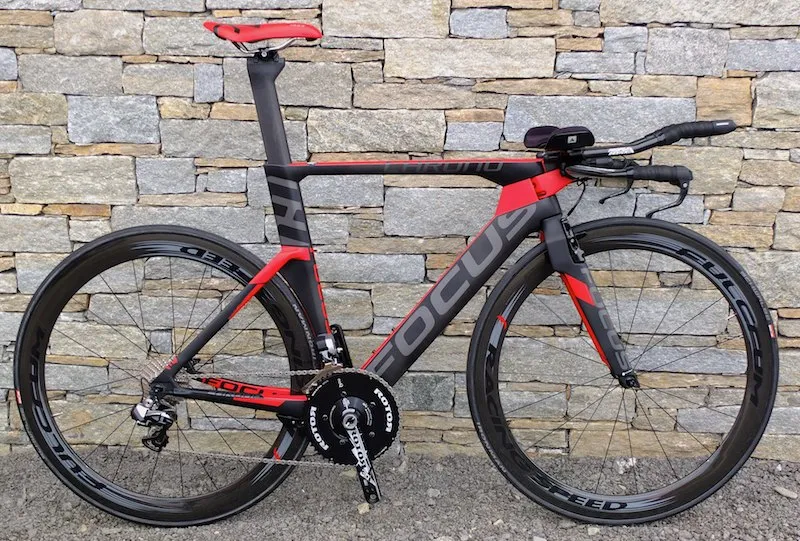
The Izalco Chrono 1.0 with Shimano Dura-Ace Di2 and Rotor cranks and aero rings
The neat carbon stem mounts low on the head tube, with an angled lower edge and flat top that flows into the level top tube. It includes channels that allow all cabling to pass into the frame, keeping the airflow clean. The triathlon stem option is higher, adjustable with spacers by 5mm to 20mm, and includes a riser kit for the bar extensions. We're told that bikes will come with the triathlon stem as standard, and that the TT version will be available separately.
The fork has been cleverly designed to integrate the front brake into a stepped recess at the front. In this way, the fork retains its regulation 3:1 ratio but the upper section has the non-structural, aero-shaped brake arms attached to the front, upping the effective width.
The V-type brake is a Focus design manufactured by TRP, while the rear brake is an existing TRP creation fitted under the chainstays and behind a bottom bracket cowl. A major benefit of this design is simple brake access for wheel changes and maintenance.
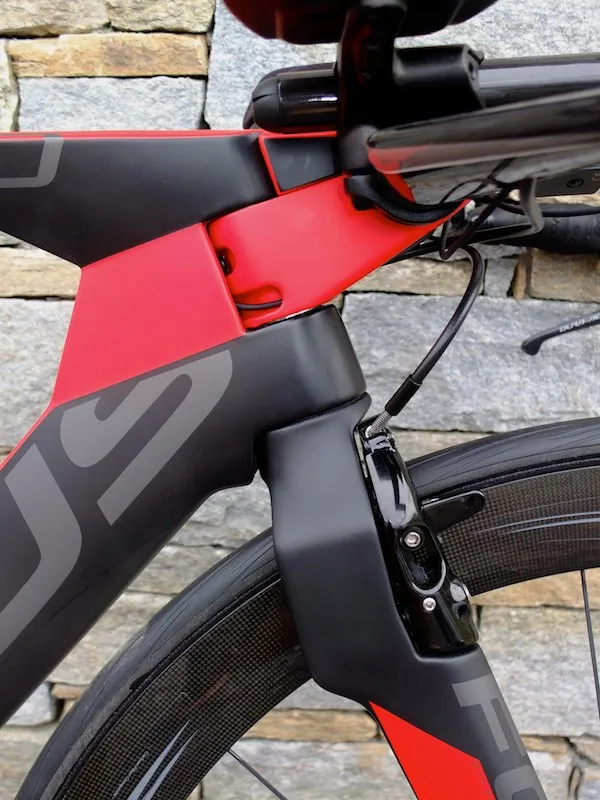
The front brake is aero but accessible
The horizontal rear dropouts contain a grub screw for accurate setting of the rear wheel position in relation to the sculpted seat tube, although maximum tyre size is only 23mm. The aero seatpost is fastened by an integrated clamp, and has a sliding saddle clamp on top that allows riders a seat angle between 75 and 79 degrees.
All bikes will come with Profile bars and extensions, and the frame is compatible with electronic or mechanical shifting, the electronic versions all featuring shift buttons on both the extensions and brake levers for ultimate control. The frame weight is quoted as 1,390g for a medium, which is 30 percent lighter than before, and the Max Flow Trespas fork weighs a further 430g.
Four versions will go on sale around the end of the year, starting with the Izalco Chrono Team Ag2r La Mondiale Race, fitted with Campagnolo Record EPS, Bora TT carbon chainset, Fi'zi:k saddle, Fulcrum Racing Speed 50mm wheels and Schwalbe Ironman tubulars – all yours for €8,999.
The Chrono 1.0 has Shimano Dura-Ace Di2, a Rotor 3D crank with Aero TT rings, Fi'zi:k saddle and the same wheelset for €6,999. Next is the Chrono 2.0 with Ultegra Di2, a Rotor 3D crank, Fi'zi:k saddle and Fulcrum clincher wheels for €3,999.
Lastly, the entry level Chrono is the 3.0, with Shimano 105, Dura-Ace bar-end shifters, a Vision TriMax PRO chainset, Fi'zi:k saddle, Profile ABS brakes and Fulcrum clincher wheels for €2,899.
For more information see www.focus-bikes.com.
